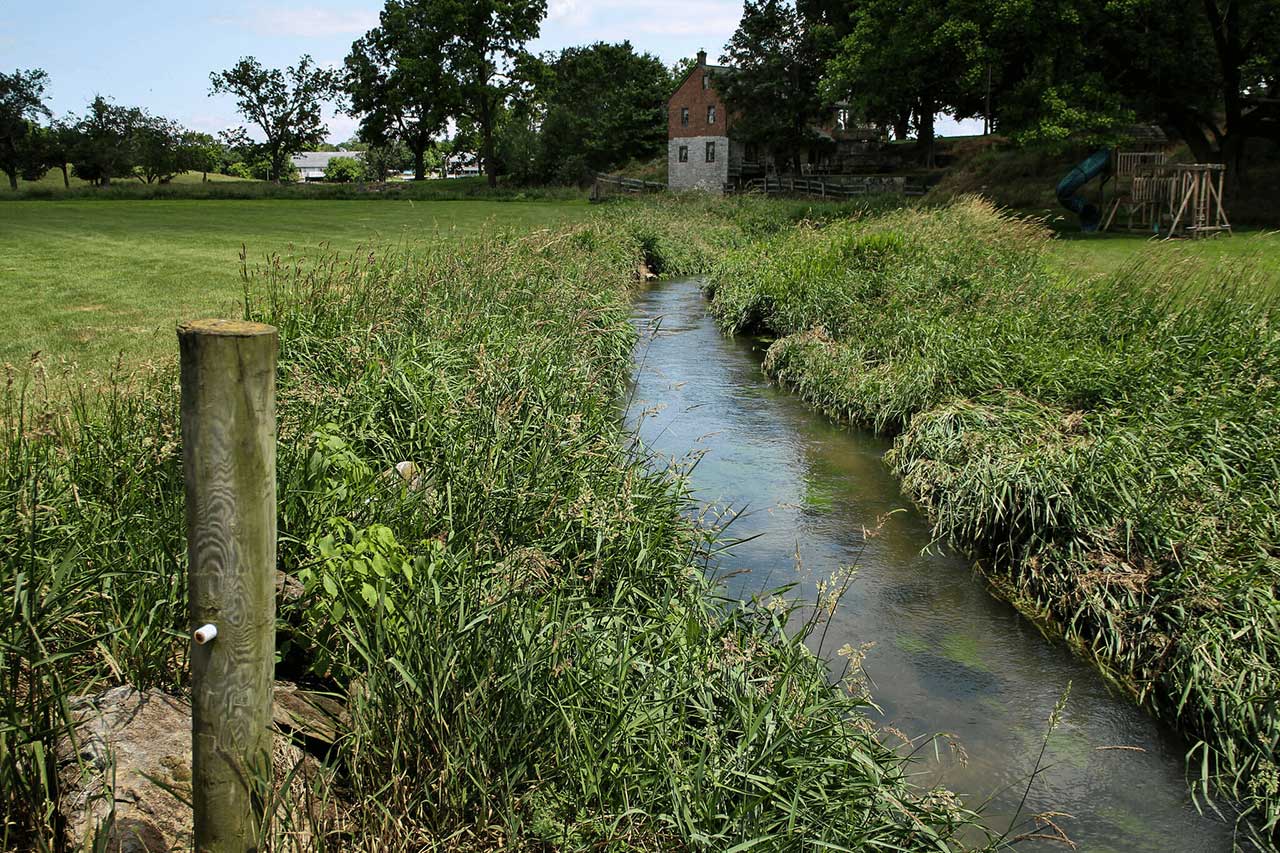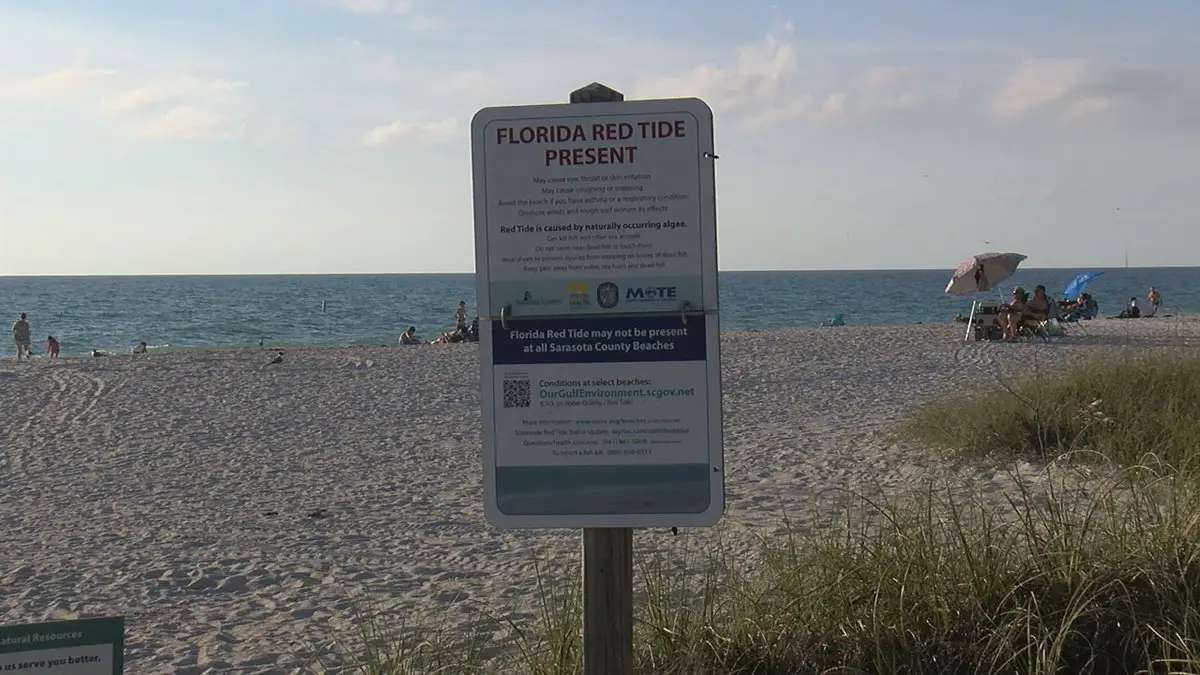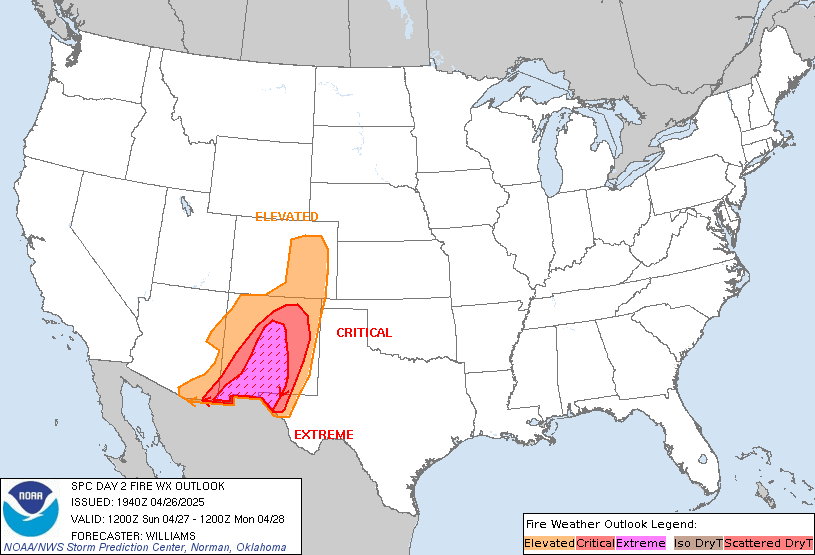A Red tide is an event that occurs off of coastlines when algae a plant-like organism grows out of control that cause the water to change color and can be hazardous to human health causing irritation, shellfish poisoning, and other aquatic hazards. What Causes Red Tide?
Red tide also called harmful algal blooms (HABs), occur when microscopic algae (the best-known association-Karenia brevis), occur in the H20 & multiply to higher-than-normal concentrations because of certain correct environmental, chemical, & physical conditions that advantage them are all present.
Red tides can last a few weeks or longer than a year. They can even subside and then reoccur infiltrating a huge area of the ocean. The duration of a depends on physical, chemical, biological, and ecological conditions that influence its growth and persistence, including sunlight, nutrients, and salinity, as well as the speed and direction of wind and water currents.
What Causes Red Tide
The Florida red tide alga, Karenia brevis, needs the following components to form a bloom.
- The first is biology the organism must be present in the water and it must out-compete other phytoplankton.
- The second is the correct chemistry which includes the appropriate temperature, salinity, and nutrients that Karenia brevis needs to grow and multiply.
- The third component is the right physical conditions to concentrate and transport K. brevis.
- The fourth component is ecology the presence or absence of other life forms, such as other marine algae that may encourage or inhibit K. brevis blooms.
Red tides are a type of harmful algal bloom that is caused by algae, which are tiny, microscopic organisms that grow in the water. Most if not all bodies of water have some algae, but in a red tide, there is a lot more algae in the water than usual. In fact, the water changes colors varying from green to a reddish hue because the population of algae living in the water becomes immense.

Red tides have been around on Earth long before humans. However, certain human activities them more frequent, and the events last longer. Environmental problems can occur as toxins are released when the organism Karenina brevis dies off by higher than normal concentrations of microscopic algae in the water.
These algae, known as phytoplankton, are single-celled protists, plant-like organisms that can form dense, visible patches near the water’s surface. Certain species of phytoplankton, dinoflagellates, contain photosynthetic pigments.
Chemicals from farming, factories, sewage treatment plants, and other man-made sources can become dissolved in water on the land. This polluted water, called runoff, eventually flows into the ocean and can cause algae to grow faster, leading to red tides.
When nutrient-rich streams of water flow down the river and into the estuary, the nutrients are available to freshwater species including blue-green algae cyanobacteria and estuary-dwelling algae species that can each form Red blooms.
There are numerous factors that can cause the proliferation of these algae blooms. Some of the most common factors include warm temperatures at the surface level of the ocean, a low salinity content, calm waters, high nutrient content diluted in the water, and periods of rain followed by sunny days during the hot and humid summer months.
There are some circumstances in which the algae that cause red tide is actually carried from across distances by currents, winds, storms, or even ships. In the right conditions, the algae can spread very quickly. The result of this overabundance of algae is a depletion of oxygen in the affected waters, as well as a release of toxins into the water that can be harmful to animals and humans.
The most harmful aspect of red tides is the natural toxin they produce. Scientists are actually not sure exactly why the algae create these toxins, but there has been plenty of research done on their effects of them. During a red tide, fish and krill (who are unaffected by the toxins created by affected algae) will continue to eat the algae, and as they do so the toxins in the algae get concentrated to such a degree that those fish and krill then become poisonous to any other organisms that feed on them, including larger fish, water mammals, and birds.
What are Red Tide Blooms
Red Tides are most often associated with huge fish kills along Florida’s Gulf Coast and other states on the Gulf of Mexico. A Red Tide is a common term used when microscopic algae called phytoplankton multiply in the ocean.
The algal blooms start by occurring when a large number of nutrients are suddenly added or introduced to an area of seawater like when nutrient-rich water from the deep is brought to the surface of the ocean usually by currents. In other cases when fertilizers from nearby land farms are run off into the ocean.
When this happens the algae grow out of control. This sometimes can change the color of the surface water Some Blooms can become so large and dense they can be seen from space. Most of these red tide blooms can help the aquatic environment because they are made up of tiny algae that make up a food source. This food source creates energy that fuels the ocean environment.
A small percentage of these blooms are produced by algae that produce toxins that can kill other aquatic organisms. They can even contaminate the food chain and cause pollution in areas that humans inhabit. These harmful algae blooms are called Red tide.
Sometimes these tides aren’t even red in color or associated with a tide. Researchers call these Harmful Algal Blooms or HABs. Die-offs of many marine species, like whales and sea turtles, have been linked to red tides. The toxins can even produce a foam that causes seabirds to lose the waterproofing on their feathers, resulting in their death.
In Florida, manatees can be affected by brevotoxin, so much so that it can lead to respiratory problems or even death. It’s a vicious cycle: Either from oxygen deprivation or direct exposure to the toxins, red tide kills marine life including sea turtles, manatees, and goliath grouper. When those creatures die and decay, the nutrients released from their carcasses are a significant nutrient source for blooms, allowing the red tide to grow, and more fish to die.
Harmful Agal Tide Blooms
In contrast to the many amounts of red tide species that are fueled by nutrient pollution associated with urban or agricultural runoff, there is no demonstrated direct link between nutrient pollution and Karenia brevis red tide formation or the frequency of how often they occur.
Florida red tides develop 10-50 miles off the coast, away from human-contributed nutrient sources. Red tides occurred in Florida long before human settlement, and severe red tides were observed in the mid-1900s before the state’s coastlines were heavily developed. However, once red tides are transported by weather or wind to shore, they are capable of using human-contributed nutrients for their growth.
At high enough concentrations, Florida red tide can discolor water a red, brown, rusty orange, or even slightly greenish hue. Red tides caused by other algal species can appear red, brown, green, or even purple. The water can also retain its normal color during a bloom.
During a bloom, filter-feeders like clams inadvertently consume the toxin as they filter the water for food (algae), and the toxin accumulates inside their tissues. At these much higher concentrations, the toxin poisons shellfish and if consumed can lead to paralytic shellfish poisoning in people.
The Worst Place for Red Tide Harmful Algal Bloom
The FWC had received multiple reports of harmful algal blooms causing dead fish in communities throughout Southwest Florida. One community, Indian Rocks Beach, in Pinellas County, decided to cancel a beach festival slated for next month amid red tide concerns.
The algae, which is known formally as the single-cell Karenia brevis, has concentrated near Tampa and neighboring communities. Scientists have found the algae at rates ranging from 10,000 cells per liter to more than 1 million cells per liter levels that result in fish kills and breathing difficulties in exposed humans, according to the Florida Fish and Wildlife Conservation Commission. The FWC said Friday 3/24/23 that red tide was detected at concentrations greater than 100,000 cells per liter in samples along the Gulf Coast of Florida.
Florida Fish and Wildlife Conservation Commission(FWC) said red tide becomes harmful to people at the level of 10,000 cells per liter. Red tide was also detected in the background to low concentrations in numerous counties in Florida.
Red tides produce a toxin called brevetoxin that can make humans ill if they breathe the toxin in through sea spray or get wet with contaminated water. The illness can cause a variety of symptoms, according to the Centers for Disease Control and Prevention (CDC) including:
- Coughing and sneezing
- Shortness of breath
- Eye, skin, and throat irritation
- Asthma attacks
The FWC had received multiple reports of harmful algal blooms causing dead fish in communities throughout Southwest Florida. If you want to check out the red tide forecast for an upcoming trip to the beach, see NOAA’s Harmful Algal Bloom forecast online: https://tidesandcurrents.noaa.gov/hab_info.html
Many algae species cause red tides all over the world. Yet, the micro-organism that causes the state of Florida’s red tide, K. brevis, is found almost exclusively in the Gulf of Mexico from Mexico to Florida.
Florida red tides can be transported around the Gulf of Mexico as coastal waters move with winds and ocean currents. Some red tides have even been carried by the Gulf Stream current into the Atlantic Ocean as far north as the state of Delaware.
Red tides are not unusual in the waters of the Gulf of Mexico off the western coast of Florida. The strong smell; eye, nose, and throat irritation; and large fish kills related to the event have been documented as far back as the 1840s. Red tides are caused by tiny algae that grow on the surface of the ocean, occasionally giving it a reddish-brown tint. Scientists can use satellite imagery to map the extent of red tides and monitor how they spread over time.
A red tide is an event that occurs on the coastline when algae a plant-like organism grows out of control. The name “red tide” comes from the fact that overgrown algae can cause the water to change color. Red tides can be hazardous .………………………………………………………………………………… Read more
Red Tides Contain Harmful Algal Bloom
Satellites detect changes in the way the sea surface reflects light. These changes can be linked to concentrations of chlorophyll, showing where algae and other ocean plants are concentrated in the ocean. Red tide is caused by the accumulation of Karenia brevis, a single-celled organism called a dinoflagellate, according to the University of Florida Thompson Earth Systems Institute.
Most dinoflagellates are harmless, but some can produce neurotoxins that can cause respiratory problems in humans. It can also attack the central nervous systems of fish and other wildlife.
Red tides are a type of harmful algal bloom, and they occur worldwide. There are over 300 species of red tide, and within the United States, these blooms appear in three main coastal areas, although researchers are studying bigger blooms in regions where they were once mitigated before. Red tides are caused by several different microorganisms, all phytoplankton that use light energy to grow.
Climate change complicates the frequency and occurrence of red tides. Wind and temperature are expected to increase with a warming planet. With more wind stirring up nutrients, dinoflagellates can get food easier. But diatoms prefer calmer conditions.
Scientists and researchers predict that climate change will increase the frequency and intensity of hurricanes, potentially moving blooms to new locations around the world. In Florida, a red tide lasted for more than 17 months after big hurricanes blew through in 2004 and 2005.
Normally, Florida’s naturally occurring Red Tides called Karenia brevis last 5-6 months beginning in the late summer/early fall & lasts through winter until February/March, where it normally dissipates .…………………………………………………………………………….. Read more

References:
National Geographic-Red Tides and Algal Blooms

